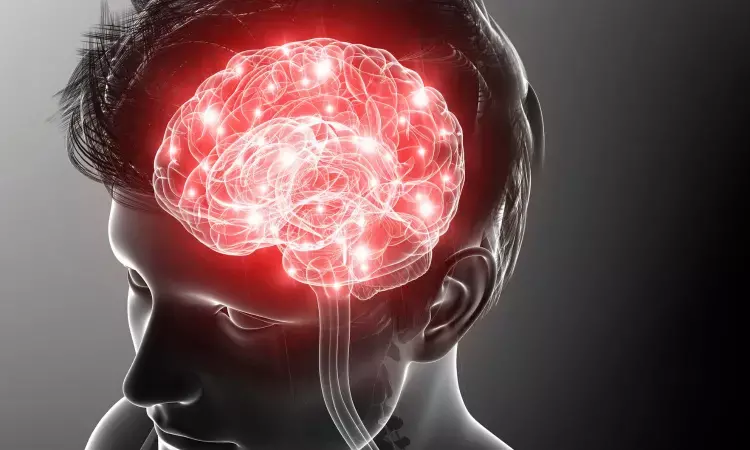- Home
- Medical news & Guidelines
- Anesthesiology
- Cardiology and CTVS
- Critical Care
- Dentistry
- Dermatology
- Diabetes and Endocrinology
- ENT
- Gastroenterology
- Medicine
- Nephrology
- Neurology
- Obstretics-Gynaecology
- Oncology
- Ophthalmology
- Orthopaedics
- Pediatrics-Neonatology
- Psychiatry
- Pulmonology
- Radiology
- Surgery
- Urology
- Laboratory Medicine
- Diet
- Nursing
- Paramedical
- Physiotherapy
- Health news
- Fact Check
- Bone Health Fact Check
- Brain Health Fact Check
- Cancer Related Fact Check
- Child Care Fact Check
- Dental and oral health fact check
- Diabetes and metabolic health fact check
- Diet and Nutrition Fact Check
- Eye and ENT Care Fact Check
- Fitness fact check
- Gut health fact check
- Heart health fact check
- Kidney health fact check
- Medical education fact check
- Men's health fact check
- Respiratory fact check
- Skin and hair care fact check
- Vaccine and Immunization fact check
- Women's health fact check
- AYUSH
- State News
- Andaman and Nicobar Islands
- Andhra Pradesh
- Arunachal Pradesh
- Assam
- Bihar
- Chandigarh
- Chattisgarh
- Dadra and Nagar Haveli
- Daman and Diu
- Delhi
- Goa
- Gujarat
- Haryana
- Himachal Pradesh
- Jammu & Kashmir
- Jharkhand
- Karnataka
- Kerala
- Ladakh
- Lakshadweep
- Madhya Pradesh
- Maharashtra
- Manipur
- Meghalaya
- Mizoram
- Nagaland
- Odisha
- Puducherry
- Punjab
- Rajasthan
- Sikkim
- Tamil Nadu
- Telangana
- Tripura
- Uttar Pradesh
- Uttrakhand
- West Bengal
- Medical Education
- Industry
Patch technique using flow diverters effective in treating direct carotid-cavernous fistula symptoms

A recent study published in the Journal of Neuro-Ophthalmology has concluded that employing the patch technique with progressively expanding flow diverters is a practical solo approach for treating direct carotid-cavernous fistulas symptoms, achieving immediate CVR resolution, and preserving cavernous sinus anatomy.
Previously, the employment of flow diverters (FDs) in managing high-flow Type-A carotid-cavernous fistulas (CCFs) has primarily been documented as an adjunctive method to conventional endovascular approaches rather than a standalone treatment option.
In the present study, researchers retrospectively evaluated their experience with FDs as the solo nonadjunctive treatment of Type A CCF with severe cortical venous reflux (CVR).
A retrospective analysis was conducted on patients with Type A cerebral cavernous malformations (CCFs) treated using the FDs' patch technique (PT). The patients' demographic information, clinical details, and preoperative and postoperative eye examinations were documented. The procedure technique, the diameter of the Pipeline Embolization Device (PED), and immediate and long-term procedure results were summarized.
This case series included three patients with a history of trauma who presented with decreased visual acuity, cranial nerve II deficit, limited extraocular muscles' movement, and increased intraocular pressure (IOP). Diagnostic angiography confirmed high-flow Type A CCF, and endovascular treatment was performed through distal radial (2 patients) and femoral access (1 patient) by deploying four sequentially enlarging PEDs with immediate resolution of ocular symptoms. Follow-up angiography showed complete resolution in two patients. In contrast, the third patient who lost to follow-up had residual small CCF demonstrated by angiogram at four months with significant improvement from postprocedure angiogram.
The patch technique with sequentially enlarging FDs can be considered a suitable solo technique for addressing symptoms of CCF and lead to the immediate resolution of CVR without causing harm to the cavernous sinus's anatomy. The technique preserves the anatomy of cavernous sinus.
Reference:
Al-Smadi et al. Patch Technique for Primary Treatment of Type A Carotid Cavernous Fistula: A Case Series and Technical Notes. Journal of Neuro-Ophthalmology 43(4):p 541-546, December 2023.
BDS, MDS in Periodontics and Implantology
Dr. Aditi Yadav is a BDS, MDS in Periodontics and Implantology. She has a clinical experience of 5 years as a laser dental surgeon. She also has a Diploma in clinical research and pharmacovigilance and is a Certified data scientist. She is currently working as a content developer in e-health services. Dr. Yadav has a keen interest in Medical Journalism and is actively involved in Medical Research writing.
Dr Kamal Kant Kohli-MBBS, DTCD- a chest specialist with more than 30 years of practice and a flair for writing clinical articles, Dr Kamal Kant Kohli joined Medical Dialogues as a Chief Editor of Medical News. Besides writing articles, as an editor, he proofreads and verifies all the medical content published on Medical Dialogues including those coming from journals, studies,medical conferences,guidelines etc. Email: drkohli@medicaldialogues.in. Contact no. 011-43720751


